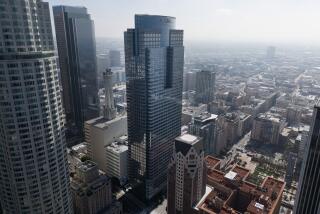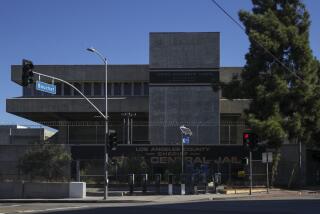Shoddy construction suspected in Taiwan earthquake collapse
- Share via
Reporting from Beijing — Taiwanese prosecutors suspect a 17-story building that collapsed after an earthquake Saturday was built with dubious construction methods, according to local media.
The predawn 6.4 magnitude temblor in Tainan, a city of 1.8 million in Taiwan’s south, flattened the Wei Guan Golden Dragon apartment complex, killing more than 40 people and burying about 100 more beneath a mountain of concrete, broken glass and rebar.
The Tainan District Prosecutor’s Office arrested three former executives of the building’s developer, the now-defunct Wei Guan company, on Tuesday. Former chairman Lin Ming-hui and two other former executives, Chang Kui-an and Cheng Chin-kui, face charges of death caused by negligence. The office is overseeing an investigation into the building.
Prosecutors said Wednesday that they had found blueprints which convinced them that half of the “concrete beam stirrups” used in some of the building’s components were “skimmed” during its construction, Taiwan News reported. In addition, the three businessmen may have “rented their construction license,” according to the news website.
Stirrups are closed loops of rebar used to support the concrete columns and beams that give a building’s structure its strength.
According to Taiwan’s state-owned Central News Agency, the quake toppled 11 other buildings, but the Wei Guan complex was the only high-rise to collapse. The building, located in a densely populated area of Tainan, was completed in 1994; neighboring structures emerged from the earthquake unscathed.
“Judging by the blueprints and the wreckage, we believe there are discrepancies in the quantities of steel beam stirrups used in reinforced concrete design,” prosecutors said, according to Taiwan News.
Daniel Zepeda, a Los Angeles-based principal at Degenkolb Engineers, said missing stirrups in either beams or columns could be enough to jeopardize a building in an earthquake.
“If you’re standing straight and somebody pushes you horizontal, you tend to brace yourself,” he said. “If the columns break, you lose what we call lateral capacity. The building wants to fall down, and the columns prevent it from falling.”
“It will take a little more effort to bring the building down if it was just beams” that were missing stirrups, and not columns, he added. “But if it’s one of the most critical beams, it could.”
The debris revealed that some of the building’s walls were packed with tin cans, according to local media reports; but experts say this may have had little to do with the building’s collapse.
“I’m always hesitant to jump to conclusions,” Zepeda said. “It’s a pretty large building, and I don’t know the extent of these cans, where they were, and whether they were in the main elements or not.”
Zepeda said he will be visiting Tainan with a small team of engineers to survey the building, “bring back some information as to what happened, and share it with the engineering community.”
Condolences for the victims of the disaster have been pouring in since the weekend, including sympathies from tennis player Venus Williams, Chinese President Xi Jinping and Pope Francis.
“Our thoughts and prayers are with the families and friends of the victims in Taiwan after this weekend’s tragic earthquake,” Los Angeles Mayor Eric Garcetti said in a statement Monday. “California has the largest concentration of Taiwanese immigrants in the nation. Today, we all join our Taiwanese American community here in Los Angeles to mourn this tragic loss of life.”
Twitter: @JRKaiman
More to Read
Sign up for Essential California
The most important California stories and recommendations in your inbox every morning.
You may occasionally receive promotional content from the Los Angeles Times.










